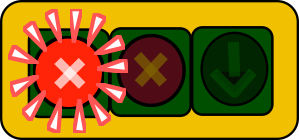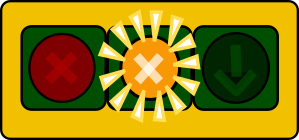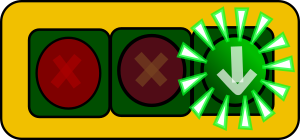Chapter 3: Traffic Signs and Signals
Road Signs and Signals
Road signs and signals are essential components of the road system in British Columbia. They serve to maintain safety and efficiency on the roads. Understanding these signs and their meanings is not only crucial for passing the driving test but also for safe driving in general.
Regulatory Signs
Regulatory signs are essential for maintaining order and safety on the roads. These signs dictate the rules and regulations that all drivers must follow. The purpose of regulatory signs is to ensure a smooth flow of traffic.
Warning Signs
Warning signs play a vital role in alerting drivers to potential hazards or changes in road conditions that lie ahead. These signs are typically yellow with black symbols or text, making them highly visible and easily recognizable. By providing advance notice of potential dangers, warning signs help drivers prepare and take necessary precautions to avoid accidents and ensure their safety and the safety of others on the road.
Informational Signs
Informational signs are typically green with white text or symbols and provide useful information to help guide drivers. They play a crucial role in maintaining order and safety on the roads. It’s important for all drivers to understand and follow these signs. Here are some examples:
Construction signs
Construction signs are essential for guiding drivers safely through work zones. These signs are usually orange with black lettering or symbols. They warn you of construction, maintenance, or utility work along the roadway.
Railway signs
Railway signs are crucial for informing drivers of upcoming railway crossings and ensuring safe passage across railway tracks. These signs help prevent accidents and ensure that drivers are aware of the presence of trains.
School, playground and crosswalk signs
School, playground, and crosswalk signs are essential for ensuring the safety of children and pedestrians in areas where they are likely to be present. These signs alert drivers to slow down, be cautious, and be prepared to stop.
Traffic Lights:
At a controlled intersection with traffic lights, the vehicles that get the green light or green arrow have the right-of-way. Those with a red light must make a full stop. If a driver is making a right turn and has a red light, they must make a full stop before making the right turn when the path is clear.
- Steady Red Light: This signal requires drivers to make a complete stop. After stopping, right turns are permitted unless a sign indicates otherwise. Left turns onto a one-way street from a one-way street are also permitted unless a sign indicates otherwise.
- Steady Yellow Light: This signal warns that the light is about to turn red. Drivers must stop before entering the intersection if they can do so safely; otherwise, proceed with caution.
- Steady Green Light: This signal means you may proceed through the intersection or turn left or right, unless a sign prohibits such turns. Yield to pedestrians and vehicles already in the intersection.
- Buses Priority Signal: This signal is used to give buses priority at intersections. Drivers must yield to buses when this signal is active.




- Flashing Green Light: This light is controlled by pedestrians. Drivers approaching a flashing green light must be prepared to stop before reaching the crosswalk or the signal, and must yield to pedestrians.
- Flashing Yellow Light: This light requires drivers to proceed with caution, yielding to pedestrians.
- Flashing Red Light: This light requires drivers to stop before the marked stop line or crosswalk. If neither marking is present, then the stop must be made before entering the intersection.



- Lane Control Signals: These signals can also flash and are displayed above highway lanes where the lane direction changes based on the signal settings.
- Flashing Red X: A flashing red X above a lane indicates that you must not drive in this lane under any circumstances. The lane is closed to traffic in your direction and is likely showing a green arrow for oncoming traffic. Driving in this lane could result in a head-on collision.
- Flashing Yellow X: A flashing yellow X above a lane means that you need to move out of this lane and merge into a lane that is marked with a green arrow. This signal is a warning that the lane is about to close or that there is a potential hazard ahead. If all lanes are showing a flashing yellow light, you should slow down and proceed with caution, being prepared to stop if necessary.
- Flashing Green Arrow: When you see a flashing green arrow above a lane, it indicates that you are allowed to drive in this lane. The lane is open and safe for travel in the direction indicated by the arrow.



- Left Turn Lights:
- Flashing Green Arrow with a Steady Green Light: This signal allows drivers to either turn in the direction of the arrow or continue straight, based on their intended direction.
- Flashing Green Arrow with a Steady Red Light: This signal permits the turn but requires through traffic to remain stopped.
- Yellow Arrow: This signal shows that the advance left turn signal is about to change. Drivers should slow down and stop before the intersection unless it’s not safe to stop in time.



Right-of-Way Rules
The right-of-way rules in British Columbia are designed to prevent accidents and ensure smooth traffic flow. Here are some key points:
- Yielding: Drivers must yield to other drivers or pedestrians based on certain rules. For example, at an intersection without traffic signals, drivers must yield to any vehicle approaching from their right. This rule helps prevent collisions at intersections.
- Intersections: At intersections with stop signs at all corners, the driver who arrives first has the right-of-way. If two vehicles arrive at the same time, the one on the right goes first. This rule helps maintain order and prevent confusion at intersections.
- Pedestrian Crossings: Drivers must yield to pedestrians at marked crosswalks and intersections. Even if there is no marked crosswalk, drivers should be prepared to stop for pedestrians. This rule is crucial for pedestrian safety.
Speed Limits and Passing
Speed limits in British Columbia vary based on the type of road and its location. Here are some general guidelines:
- Speed Limits: In city areas, the typical speed limit is 50 km/h unless otherwise posted. On highways, it can range from 80 km/h to 120 km/h. Usually, the speed limit is 50 km/hr (30 mph) in built up areas, 80 km/hr (50 mph) along rural roads. School zones have a speed limit of 30 km/h during school hours. These limits are set to ensure the safety of all road users.